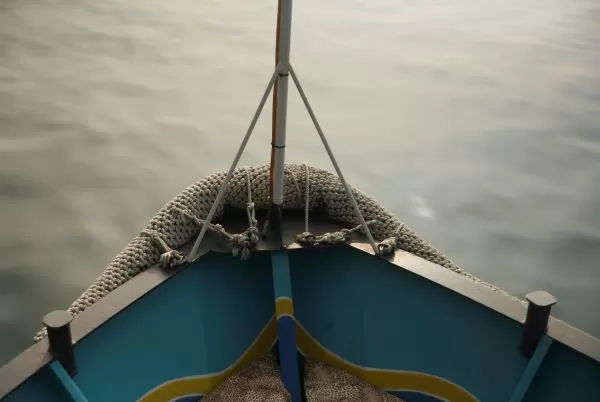


Thermaikos gulf is the reason why Thessaloniki has always been an important commercial, economic and military center. Travelers, traders, ship crews crossed its waters for centuries and experienced the beauty of the city from the sea side. But who would think today that the bottom of Thermaikos gulf could reveal the history of the city?
The story begins with a mermaid, Thessaloniki, Alexander the Great’s sister, who hides inside the city’s waters and always asks sailors and captains if her brother is alive. But beyond this myth, there are evidences that prove the history of the city, not only on its streets but also in the bottom of its bay.
In the 10th century, Thessalonian John Kameniatis describes to us the moment when the Saracen pirates’ ships flood the bay of Thessaloniki. Its coastal walls are not in a good condition. In a short period of time before the attack, Petronas, an envoy from the emperor, will think of building a peculiar dam inside the sea. Peculiar because the dam was built from carved tombs that Petronas took from the cemeteries of the city and submerged in the waters of Thermaikos gulf, creating an unusual fortification. However, the dam was not completed and the city was attacked for the first time in 904 AD. Who would have thought that the depths of Thermaikos hide such a secret?
Another story says that the French ship “Guadalquivir”, following the Marseilles to Odessa route via Thessaloniki, sank on April 28th, 1903, when a group of Bulgarian anarchists decided to blow it up. The passengers’ cries for help are heartbreaking and their anguish is great. The passengers will eventually be rescued and taken by boats to land. But not the French steamship, which even today hides forgotten at the bottom of Thermaikos gulf.
A second shipwreck, however, is that of the Ottoman ironclad “Feth-i Bülend”, which Admiral Nikolaos Votsis sank, terrorizing the Turks and contributing to the liberation of the city, in 1912. A small part of the battleship is today hidden in the sea of Thermaikos. But its mast is said to support the Greek flag on the White Tower, the symbol of the city.
World War I will also leave its traces in the bay of Thermaikos, with the downing of the German Zeppelin LZ.85 plane. The Zeppelin, which had caused extensive damage since the beginning of 1916, was shot down in early May by fire from allies. It was later assembled and exhibited in the White Tower, with the people of Thessaloniki photographing it and being photographed next to it every day.
However, stories state that even during World War II, the German army sank enemy ships during its withdrawal.
But there are also newer wrecks, like that of Epanomi, which, rusty and imposing, has given its own name to the beach and has very different stories to tell.
Written by Vasiliki Kartsiakli